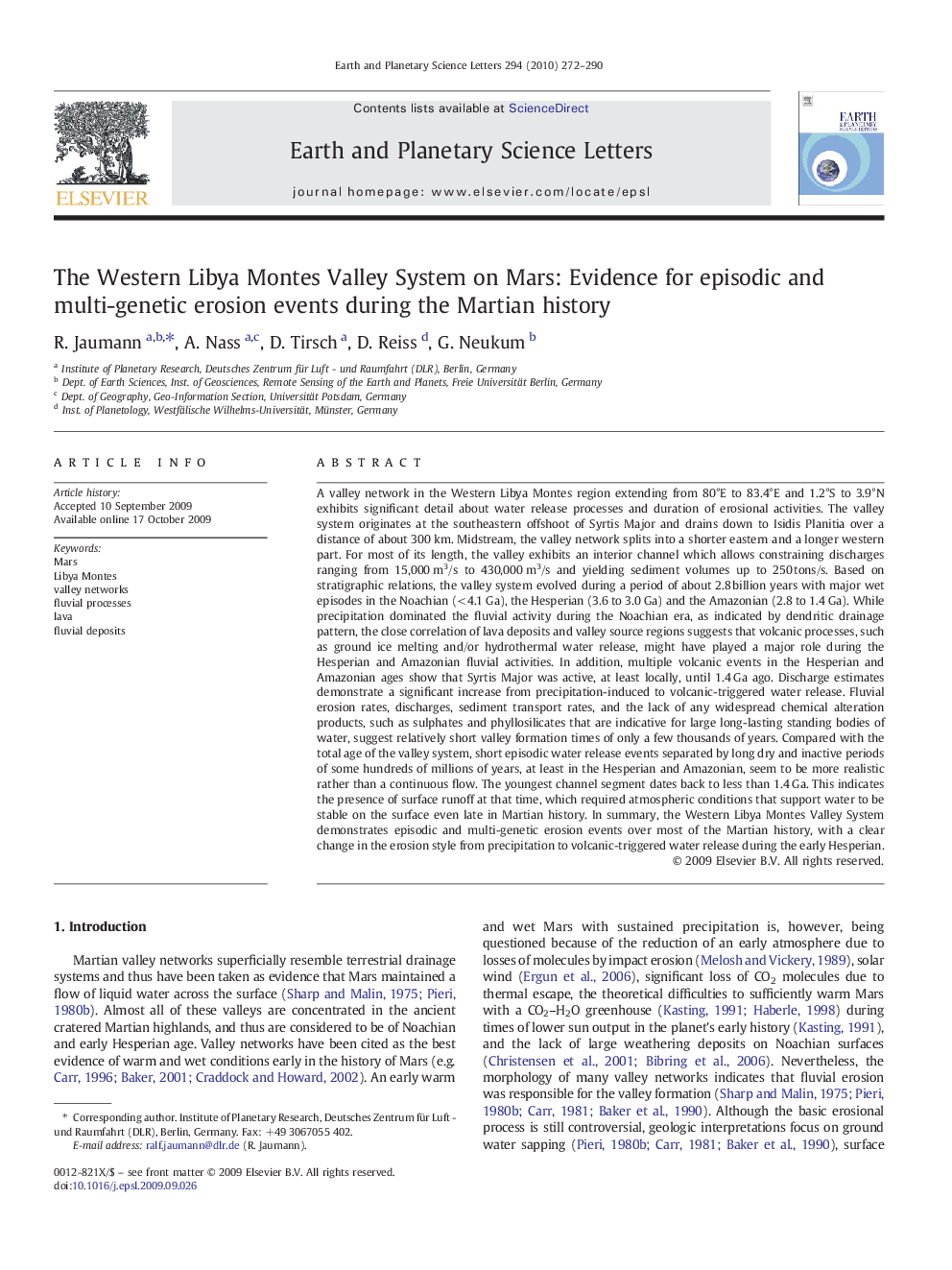| کد مقاله | کد نشریه | سال انتشار | مقاله انگلیسی | نسخه تمام متن |
|---|---|---|---|---|
| 4678472 | 1634851 | 2010 | 19 صفحه PDF | دانلود رایگان |

A valley network in the Western Libya Montes region extending from 80°E to 83.4°E and 1.2°S to 3.9°N exhibits significant detail about water release processes and duration of erosional activities. The valley system originates at the southeastern offshoot of Syrtis Major and drains down to Isidis Planitia over a distance of about 300 km. Midstream, the valley network splits into a shorter eastern and a longer western part. For most of its length, the valley exhibits an interior channel which allows constraining discharges ranging from 15,000 m3/s to 430,000 m3/s and yielding sediment volumes up to 250 tons/s. Based on stratigraphic relations, the valley system evolved during a period of about 2.8 billion years with major wet episodes in the Noachian (< 4.1 Ga), the Hesperian (3.6 to 3.0 Ga) and the Amazonian (2.8 to 1.4 Ga). While precipitation dominated the fluvial activity during the Noachian era, as indicated by dendritic drainage pattern, the close correlation of lava deposits and valley source regions suggests that volcanic processes, such as ground ice melting and/or hydrothermal water release, might have played a major role during the Hesperian and Amazonian fluvial activities. In addition, multiple volcanic events in the Hesperian and Amazonian ages show that Syrtis Major was active, at least locally, until 1.4 Ga ago. Discharge estimates demonstrate a significant increase from precipitation-induced to volcanic-triggered water release. Fluvial erosion rates, discharges, sediment transport rates, and the lack of any widespread chemical alteration products, such as sulphates and phyllosilicates that are indicative for large long-lasting standing bodies of water, suggest relatively short valley formation times of only a few thousands of years. Compared with the total age of the valley system, short episodic water release events separated by long dry and inactive periods of some hundreds of millions of years, at least in the Hesperian and Amazonian, seem to be more realistic rather than a continuous flow. The youngest channel segment dates back to less than 1.4 Ga. This indicates the presence of surface runoff at that time, which required atmospheric conditions that support water to be stable on the surface even late in Martian history. In summary, the Western Libya Montes Valley System demonstrates episodic and multi-genetic erosion events over most of the Martian history, with a clear change in the erosion style from precipitation to volcanic-triggered water release during the early Hesperian.
Journal: Earth and Planetary Science Letters - Volume 294, Issues 3–4, 1 June 2010, Pages 272–290